Brace yourself for toxic winter air
Injina Panthi / November 10, 2019
Winter is approaching in Kathmandu. Winter is not only about chilly weather but also more toxin in the air we breathe.
Govinda Lamichhane, an inspection official at the Department of Environment, said that during the monsoon season the rain washes away the dust particles (aerosols) in the atmosphere, but in the dry season (winter) as rain is less frequent, dust particles remain in the atmosphere for longer. Also, during the winter, the cold air near the earth’s surface cannot flow because it remains trapped under a layer of warmer air. This phenomenon leads to increased air pollution.
Nepal government has been measuring the air quality of different places of Kathmandu since 2016. Shankar Prasad Paudel, the spokesperson of the Department of Environment said that though the department has archived the data of the last three years they have yet to process the data scientifically for a comparative analysis of air pollution of Kathmandu.
Therefore, for this report, South Asia Check has studied the data published by the World Air Quality Index Project available on their website and analyzed the air quality index (AQI) data of Ratna Park, US embassy and Phohara Durbar in Kathmandu. We have studied the data on PM 2.5, which are particulate matters of less than or equal to 2.5 microns in diameter. South Asia Check has examined the air pollution level of five months starting from November 2018 (beginning of winter season) to March, 2019, when the temperature begins to warm up.
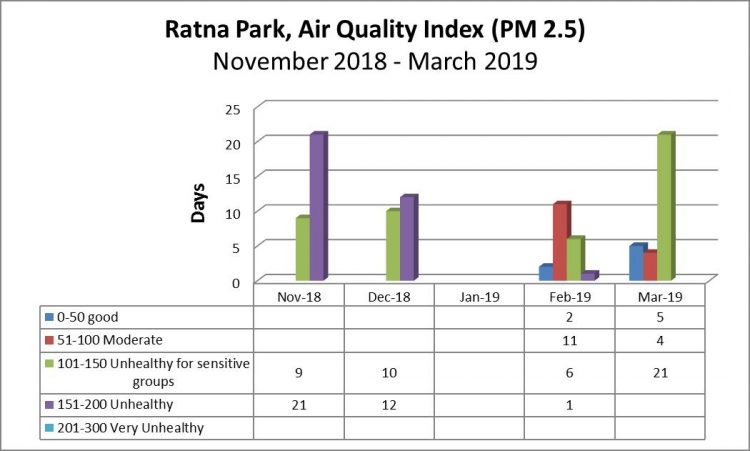
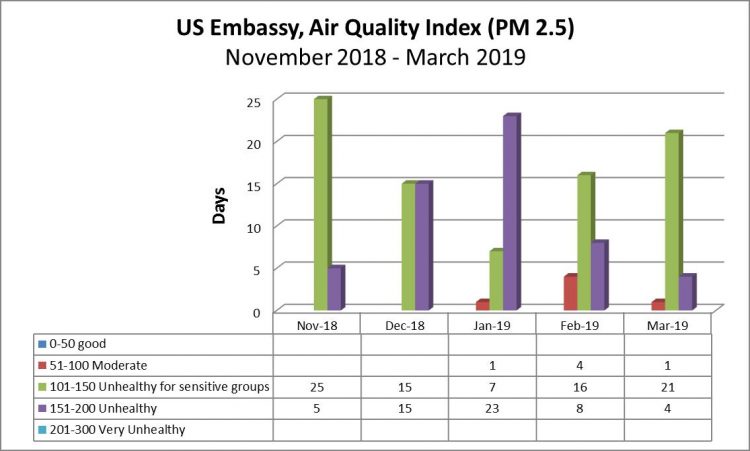
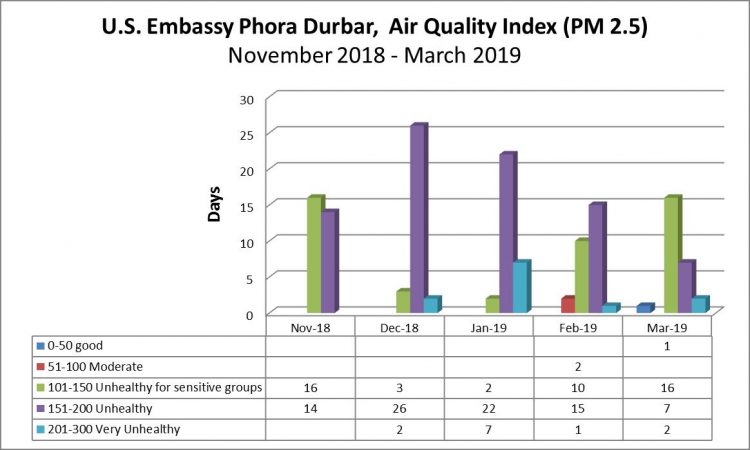
The air quality monitoring authorities consider the AQI values between 0-50 as “good”, 51-100 as “moderate”, 101-150 as “unhealthy for sensitive groups”, 151-200 “unhealthy for everyone” and the values between 201-300 as “very unhealthy for everyone”.
Here, a consolation for us is that none of these three places have PM levels higher than 300. That means our air is not much hazardous.
While we were preparing this report on November 7, the air quality index value at 11 am in New Delhi, the Indian capital, read 349. In Delhi, air pollution has created a lot of panic.
Winter will be over in a few months. However, the toxicity in the Kathmandu air will not go away soon. Earlier this year Kathmandu’s air remained toxic even after the end of winter and onset of monsoon.
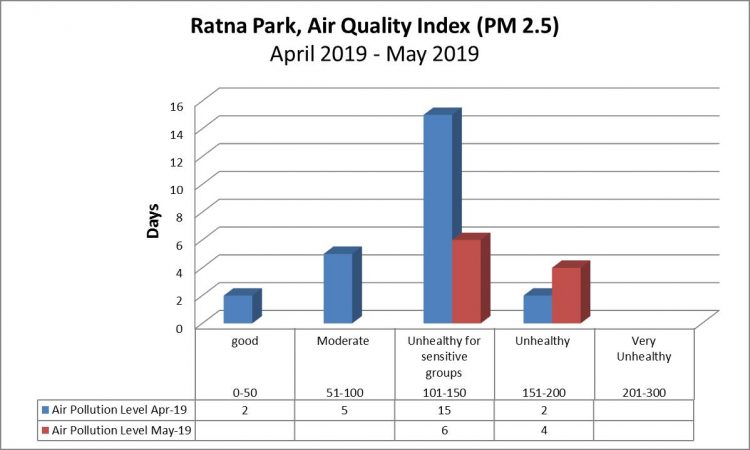
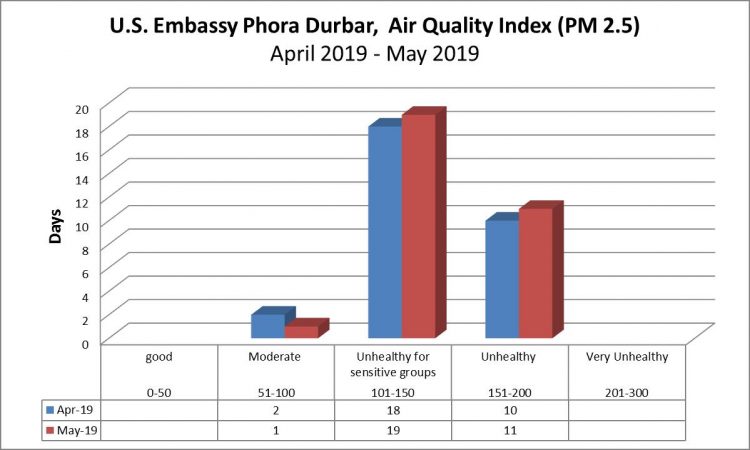
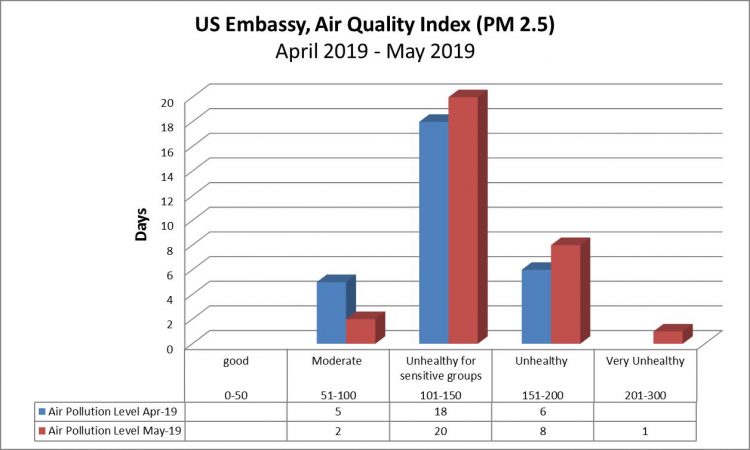
Last year, the monsoon season had seen a few “good” air days.
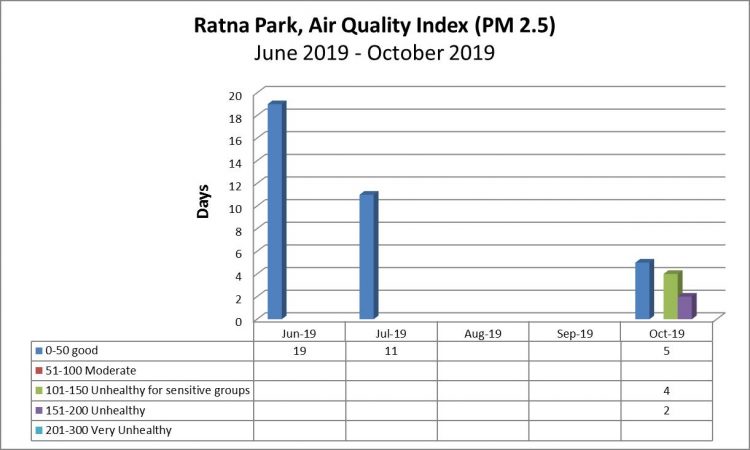
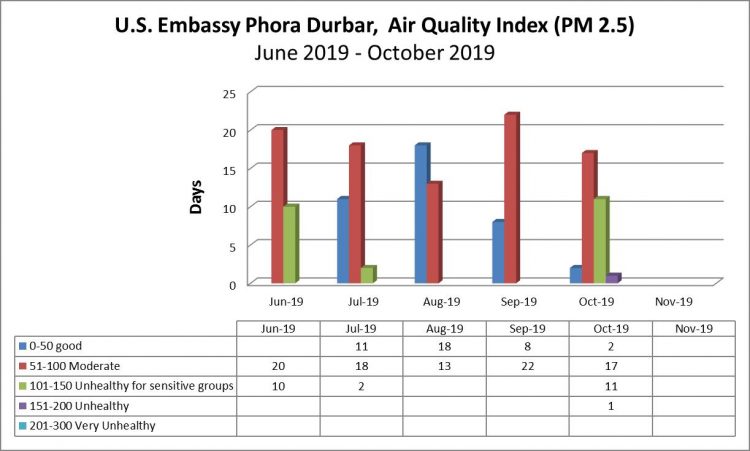
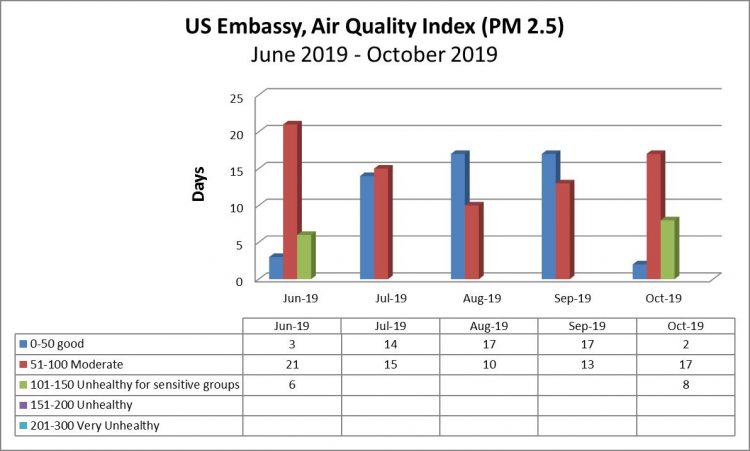
Emissions from vehicles and brick kilns, open burning, delay in road construction, and crusher plants among other things are responsible for making the air toxic.
Impact of air pollution in human health
According to World Health Organization air pollution causes heart diseases, respiratory diseases, skin diseases, dementia, weakens children’s immune system and lowers growth.
“In Nepal in the absence of systematic data-keeping, it is difficult to estimate the growth rate of patients in hospital during the cold and dry seasons. However, air pollution is deteriorating. So, instead of focusing on figures, measures should be taken to reduce the air pollution at the earliest,” said pulmonologist Dr Arjun Karki.
Dr Krishna Man Maskey, vice president of the Public Health Association argued that there are policies and laws to control air pollution but due to weak monitoring mechanism, loopholes in inspection and lack of punishment, air pollution is not under control.
Dr Karki advises the following to protect yourself from air pollution and related hazards in winter:
- In the mornings, the pollutants are concentrated near the surface of the earth, so jogging and physical exercises should be done only after sunrise.
- Pollution monitoring machines have been installed in various locations of Kathmandu, so one should avoid the places where the air pollution is high.
- Avoid outdoor activities when the air pollution is high.
- Wear N95, N99 or P95 masks if possible
This material is copyrighted but may be used for any purpose by giving due credit to southasiacheck.org.
Comments
Latest Stories
- In Public Interest Covid-19 cases are low, but that’s not an excuse to avoid vaccination
- In Public Interest What is BF.7, the sub-variant that has the world by its grip?
- In Public Interest Threat of a new Covid-19 wave looms large amid vaccine shortage in Nepal
- In Public Interest As cases decline, Covid-19 test centres in Kathmandu are desolate lot
- In Public Interest Dengue test fee disparity has patients wondering if they’re being cheated
- In Public Interest As dengue rages on, confusion galore about what it is and what its symptoms are. Here’s what you need to know
In Public Interest
 Covid-19 cases are low, but that’s not an excuse to avoid vaccination
The Pfizer-BioNTech bivalent vaccines authorised by the Nepal Government provide better protection a...
Read More
Covid-19 cases are low, but that’s not an excuse to avoid vaccination
The Pfizer-BioNTech bivalent vaccines authorised by the Nepal Government provide better protection a...
Read More
- What is BF.7, the sub-variant that has the world by its grip?
- Threat of a new Covid-19 wave looms large amid vaccine shortage in Nepal
- As cases decline, Covid-19 test centres in Kathmandu are desolate lot
- Dengue test fee disparity has patients wondering if they’re being cheated
- As dengue rages on, confusion galore about what it is and what its symptoms are. Here’s what you need to know